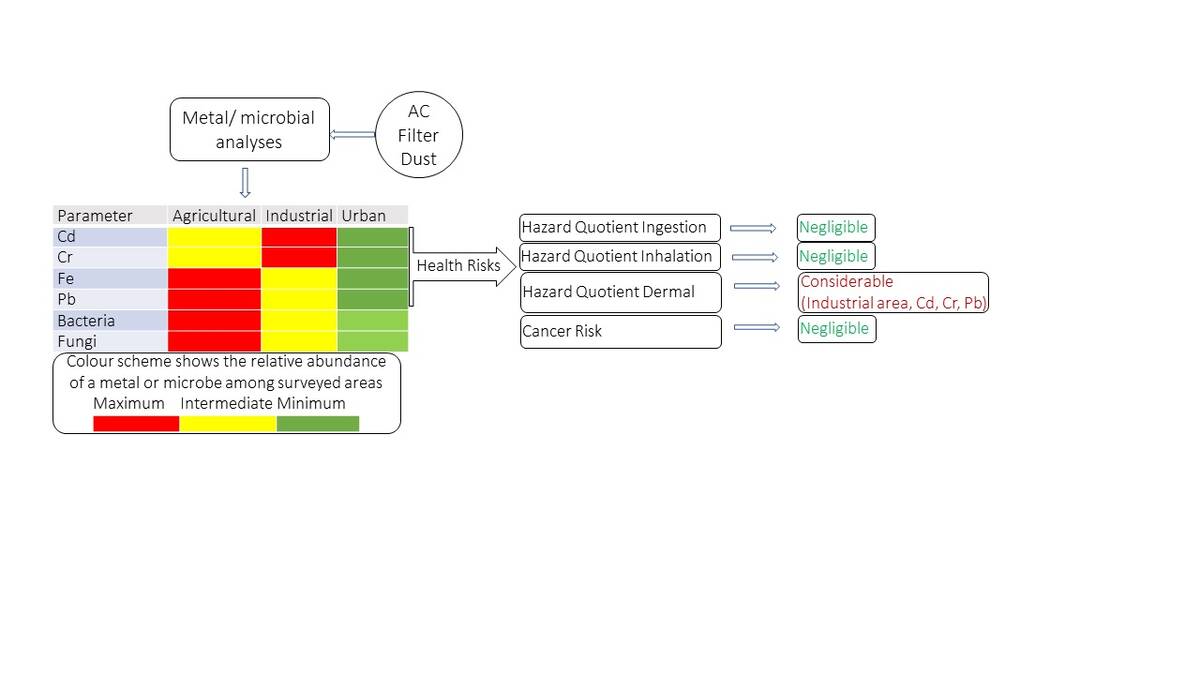Among others, road traffic, industrial emissions, commercial activities, smoking and cooking are considered as major contributing factors for the increasing levels of pollutants in atmosphere. High levels of potentially toxic metals and microbes in atmosphere, especially in indoor air, may pose serious threat to human health. Therefore, concentration and associated health risks of potentially toxic trace metals (Cd, Cr, Cu, Fe, Mn, Pb, and Zn) and their risk to human health, and microbial load in indoor air was assessed using air condition (AC) filter dust samples collected from 5 locations representing residential, agricultural and industrial settings of Eastern Province, Kingdom of Saudi Arabia. The levels of trace metals varied considerably among sampling areas, with the highest levels of Cr and Cd recorded in the Industrial-area sites followed by the Agricultural and Urban-Residential sites. The highest levels of Pb and Fe were found in the Agricultural area sites followed by the Industrial and Urban-Residential area sites. The metals in dust sample, especially Cd, Cr and Pb, showed a considerable health risk through dermal pathway. Among the sites, the highest hazard quotient for these metals was found for Al-Qatif-Industrial areas sites and among the metals it was the highest for Cd. The cancer risk from the metals contained in AC filter dust was negligible. Samples collected from Agricultural and Industrial area sites were substantially contaminated with bacteria and fungi, respectively. Bacterial contaminants were mostly Gram Negative, with considerable antibiotic resistance and haemolytic activity. Thus, indoor air quality as assessed by AC filter dust depicted that a considerable health risk could be posed by the trace heavy metals and microorganisms for a long-term exposure. Furthermore, this study demonstrated that AC filters dust could be a unique and reliable test sample for the assessment of indoor environment.

